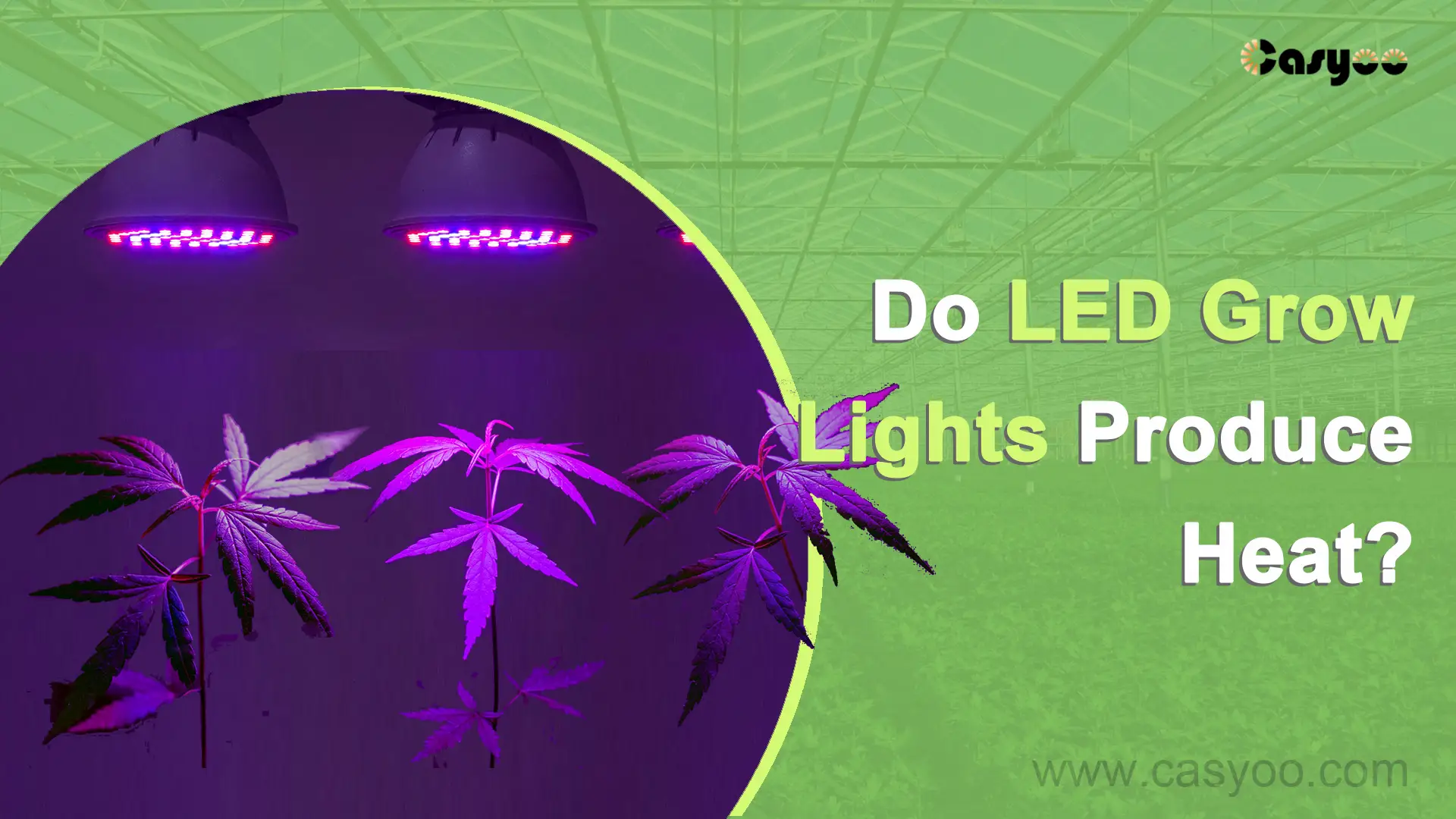More and more gardeners are now updating to LED grow lighting. LED grow lights outperform HID lights in a variety of ways. But one of the most oft-touted advantages is that LED grow lights run cooler.
Some manufacturers try to convince you that their LEDs do not produce any heat or that your growing space will maintain the ideal temperature on its own since their fixtures can manage heat well. They are liars. Keep reading to know why.
Do LED Grow Lights Emit Heat?
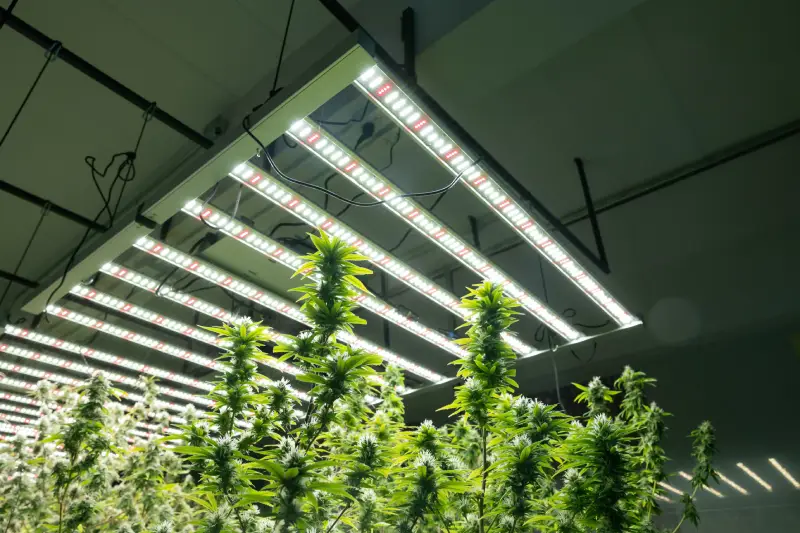
Yes, all light emits heat, whether it’s from diodes, bulbs, or stars like our sun. But LED grow lights can produce up to 90% less heat than fluorescent or traditional HID lights.
HID grow lights generate heat by arcing electricity through specific gases—that is, they heat up the gasses to the point where they glow. This indicates that HID bulbs are extraordinarily hot—hot enough to ignite a fire. Full spectrum LED grow lights themselves do not get hot enough to ignite a fire because of the completely distinct electroluminescence technology used in LEDs, which produces light without the need for heat.
They feature:
- More Effective Energy Conversion: Compared to conventional lights, LEDs efficiently convert energy into usable light, minimizing heat production.
- Less Heat Production: LED grow lights are designed to produce as little heat as possible during operation.
- Heat Dissipation: Heat produced is dispersed by built-in cooling systems and heat sinks, preventing an accumulation of heat that could harm plants.
Why Do LED Grow Lights Produce Heat?
The main cause of the heat generated by LEDs is minute flaws in the diode’s crystal structure. The electricity that is not converted to light will be turned into heat.
The second reason is the internal reflection occurring within the diode. About 80% of the power in highly efficient LEDs is converted to light, and about 80% of that light leaves the diode. The light that doesn’t make it out is converted to heat when it is re-absorbed by the diode.
The last reason is another form of light absorption. The light emitted by your LEDs will eventually be absorbed by an object in your grow room, turning it into heat.
The Law of Conservation of Energy states that energy can only change forms; it cannot be created or destroyed. Thus, light energy that is absorbed by the items in your grow room does not vanish; instead, it is eventually transformed into heat or chemical energy that is stored by your plants as sugars.
What Are the Advantages of Low Heat Output?
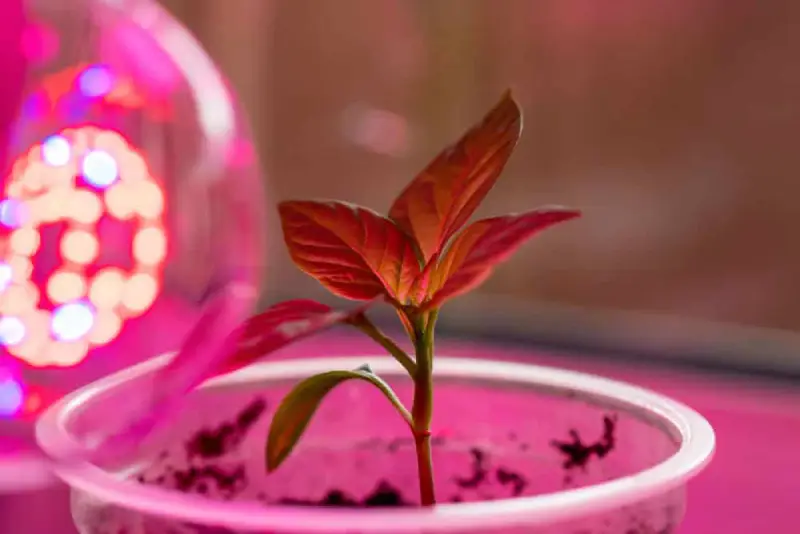
LED grow lights produce very little heat, which has several benefits for indoor growing:
Plant Health
The low heat output of LED grow lights keeps temperatures at ideal levels, promoting healthy growth without putting stress on plants.
Energy Efficiency
Less heat production means cheaper cooling requirements, which results in cheaper energy costs and more affordable indoor gardening.
Environmental Control
Lower temperatures make it easier to control humidity and avoid mold growth, which benefits plants by creating a healthier environment.
Closer Placement
You can put your LED light closer to the crops. Plants benefit from the better light absorption and even coverage that LED grow lights provide.
How to Tell Whether My LED Grow Lights Are Emitting Too Much Heat?
Check your plants on a regular basis. This will enable you to promptly detect any changes in texture, color, or leaf loss on your plant.
The regions next to the grow lights are typically where these overheating symptoms first appear. If you don’t take care of the problem, they will eventually make their way to the rest of the plant.
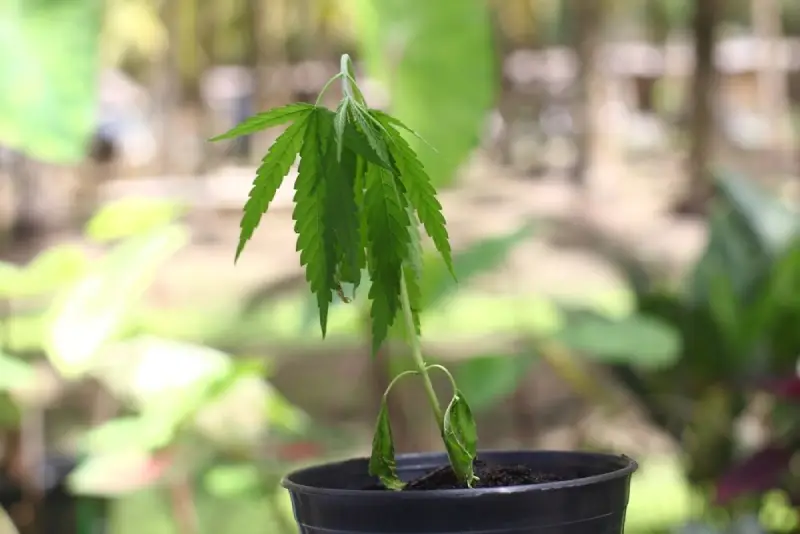
Here are some symptoms that your grow lights are heating your plants too much:
- Browning leaf tips turning brown
- Curling leaves
- Yellowing leaves
- brown spots on stems
- wilting foliage and stems
- Dropping leaves
Adjust the distance between your grow lights and plants as soon as you notice the above signs of heat stress in your plants.
How to Calculate the Heat Production of LED Grow Lights?
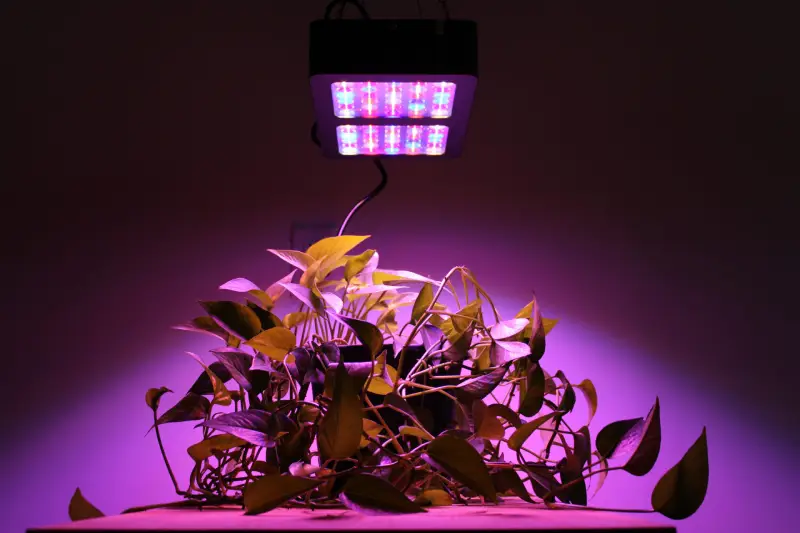
It’s simple to figure out how much heat your grow light emits. To get the total BTUs (BTUs are a common heat measurement used in the HVAC industry) produced each hour, just multiply the total watts utilized (the wall plug wattage) by 3.41. One British thermal unit, or BTU, is approximately equal to the heat produced by one four-inch match. This holds true for all types of lights, including LED and HID.
How to Manage the Heat Effectively?
While LED emits little heat, it’s still necessary to manage the heat in your grow room to ensure the well-being of the plants.
Ventilation
Although LED grow lights produce very little heat, it’s still important to keep the air flowing properly. This helps promote plant respiration and removes any leftover heat.
Light Intensity
Higher-intensity light will produce more heat. Follow the recommended hanging height to ensure even lighting and avoid overheating.
Choose High-quality LEDs
Pick one from a reliable supplier. These lights often feature effective heat sinks and advanced cooling technology. All these designs contribute to low operating temperatures, resulting in a longer service life and better plant growth.
Final Thoughts
LED grow lights are growing in popularity because of their energy efficiency and variable light spectrum. They do, however, produce heat, which needs to be carefully controlled to prevent any negative impacts on plant growth.
Casyoo grow lights feature high-quality Meanwell heat sink and passive cooling technology to quickly dissipate heat with no noise. Contact us today to get the best LED grow light.

